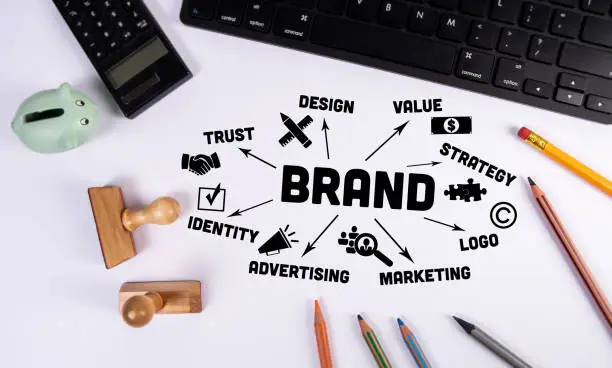Guides
Branding Tips for Startups

Building a startup is a rollercoaster ride full of challenges, surprises, and those exciting ‘wow’ moments. But through all the highs and lows, one thing keeps everything connected and on track: your brand. It’s the heart of your business and what makes it truly stand out. Whether you’re launching a brand-new startup or giving your business a fresh makeover, these 10 practical branding tips will help you build a strong foundation. Get ready to create a memorable brand identity that truly connects with your audience and sets you apart.
What Is Startup Branding and Why Does It Matter?
When you’re starting your entrepreneurial journey, one of the biggest decisions is how you present your business to the world. That’s where branding comes in. More than just a logo or a set of colors, effective branding tells your story, reflecting your mission, values, and the problem your product or service solves. It’s what turns curious visitors into loyal customers.
In a sea of startups, having a strong and memorable brand makes all the difference. It helps your business shine, catching the eyes of both potential customers and investors. Consistency across your website and social media, using the same style, tone, and visuals, builds trust and recognition. Plus, it opens the door to smart marketing strategies, making it easier for people to remember and connect with your brand.
Essential Branding Tips for Startups
We’ve seen it time and time again: startups often overlook branding, not realizing just how crucial it is. Without a strong brand, you could be missing out on valuable opportunities and potential customers in a competitive market. To help your startup stand out and succeed, we’ve put together 10 essential branding tips. These insights will guide you in building a memorable, impactful brand that truly connects with your audience.
1-Find Your Brand’s Unique Personality
Before you dive into building your business, take a moment to pause and reflect. What’s your story? What makes you you? Think about your strengths, passions, and what you want people to remember your brand for. Your brand personality is the heartbeat of your business; it’s what helps you stand out and connect with your audience.
Whether your brand is bold, innovative, fun, flexible, or driven, own it! Let those traits shine through in everything you do. This unique vibe is what attracts your ideal customers and builds a loyal community around your brand. Defining your brand’s personality early on sets the foundation for long-term success.
2. Get to Know Your Target Audience
Understanding who your ideal customers are is a key step in building a strong and successful brand. Think about who would be most interested in what you offer, are they teens or adults, men or women? Are you trying to reach a local crowd, a national audience, or even go global?
Dig a little deeper into your audience’s lifestyle, profession, and interests. These details help shape everything from your brand’s voice and visuals to the social media platforms you should focus on.
For example, if you’re targeting young professionals in urban areas, platforms like LinkedIn and X (formerly Twitter) with a clean and professional tone might work best. On the other hand, if your brand speaks to teenagers, fun and engaging content on Instagram or TikTok could be the way to go. By clearly defining your target audience, you’ll be able to connect with them more effectively and grow your brand with purpose.
3. Build a Memorable Brand Identity
Creating a strong brand identity is about bringing together all the visual and emotional elements that represent your business. This includes your logo, color palette, fonts, and also your tone of voice, brand messaging, and overall vibe. All these parts should work together to tell your brand’s unique and authentic story.
The colors in your logo aren’t just for looks; they speak volumes. For example, blue tones can build a sense of trust and professionalism, while bright oranges give off creativity and excitement. Your brand voice matters too. Whether you’re aiming for friendly, bold, quirky, or polished, make sure it aligns with your brand’s personality and speaks to your ideal audience.
In today’s competitive startup world, being different is your biggest strength. Don’t just copy what others are doing. Instead, focus on what makes your brand truly one-of-a-kind. That could be an eye-catching visual identity, a fresh take on customer service, or a compelling origin story. Find your unique angle and let it shine.
4. Keep Your Website Design Clean and Simple
When you’re launching a startup, having a professional website from day one is essential. It’s often the first impression potential customers will have of your brand, so make it count! Start by clearly showcasing your company name, logo, and slogan. These key elements build your brand identity and should be easy to spot right away.
A clean, minimal design isn’t just visually appealing, it also improves user experience. By keeping things simple and clutter-free, visitors can quickly find the information they need without feeling overwhelmed.
Think of your website as your digital storefront. A well-designed homepage and landing pages should communicate your purpose, values, and what your business offers. When everything is easy to read and navigate, users are more likely to stick around and convert.
5. Plan for Brand Scalability
As your business grows, your brand should grow with it. Scalability is key to keeping your brand consistent, relevant, and ready for new opportunities, launching new products, entering new markets, or evolving.
Start by creating a flexible brand foundation. Your logo, color palette, and visual style should be adaptable across all platforms: digital, print, packaging, social media, and more. A versatile design makes it easier to scale up smoothly without losing your brand’s identity.
Also, think ahead: Will your brand messaging resonate with international audiences? Is your visual identity broad enough to support future product or service expansions? Planning with growth in mind ensures your brand stays strong, recognizable, and effective no matter where your business goes next.
6. Leave a Lasting, Positive Impression on Your Customers
Every touchpoint with your brand, from your website to customer support to the product experience, is a chance to build trust and loyalty. Make sure each interaction leaves customers feeling great about choosing you. Focus on providing top-notch service and consistent quality. Small details matter too, smooth website navigation, fast and helpful support, and beautiful, secure packaging all enhance the overall experience. Add a personal touch with thank-you notes or special offers to show your customers your appreciation.
7. Grow Your Online Presence with Confidence
Having a strong online presence is key to building trust and attracting new customers. Start with a professional, easy-to-navigate website that showcases your brand, values, and what you offer. Make sure it’s mobile-friendly and fully optimized for search engines so people can easily find you online.
But your website is just the beginning. Create engaging digital content you can share across platforms, such as social media posts, email newsletters, blog articles, and online ads. These tools help spread your message and connect with your audience wherever they are. Don’t forget to stay active and involved, respond to comments, join conversations, and show the human side of your brand. The more you engage, the more people will remember you and trust your business.
8. Invite Feedback and Learn from It
Getting feedback is one of the best ways to grow your brand. Whether it comes from your customers, team members, or others in your industry, honest input helps you understand how people see your brand and where you can make things even better.
Make it easy and welcoming for people to share their thoughts. You can start with simple surveys, but don’t stop there. Stay active on social media, add a quick and easy feedback form to your website, or send out a kind email asking for suggestions. And don’t forget your team and industry peers.
When feedback starts coming in it will take a moment to really dive into it. Celebrate the positive highlights and use the negative points as opportunities to grow. Don’t be afraid to show your audience that you’re listening. Reply to reviews, make improvements, and share the changes you’re making. This helps build trust, strengthens your brand reputation, and keeps your customers coming back.
9. Create a Brand Style Guide
Putting together a brand style guide is one of the smartest moves you can make for your startup. It’s a clear, easy-to-follow document that outlines how your brand should look, feel, and sound, covering everything from logo usage and color schemes to fonts and the tone of voice you use in your messaging.
Think of it as a go-to guide for anyone working on your brand, whether it’s a new team member, a freelancer, or a marketing agency. This branding guide ensures your brand stays consistent and professional across your website, social media, packaging, presentations, and more.
As your business grows, having a brand style guide becomes even more valuable. It keeps everyone on the same page and saves time when creating content or collaborating with others.
10. Invest in Professional Branding to Build a Lasting Impression
Starting a business often means being smart with your budget, but putting some of those resources into professional branding is one of the best long-term investments you can make. Great branding is more than just a sleek logo or a polished website. It’s about creating a clear, consistent, and memorable identity that connects with your audience and helps you stand out from the competition.
By partnering with experienced designers or a trusted branding agency, you’ll gain valuable insights and creative expertise that can take your brand to the next level. Remember, your brand is usually the first thing potential customers see. It’s your opportunity to make a strong first impression, share your story, and build trust from the start. In short, investing in professional branding means setting your startup up for long-term success.
Conclusion
When it comes to branding, there’s no one-size-fits-all solution. There are plenty of creative directions you can take, but every successful brand has one key ingredient in common: a committed, aligned team. Your team brings your brand to life, turning ideas into a clear and consistent identity.
If you’re a small business owner, getting your branding strategy right from the beginning is crucial. A strong foundation helps avoid missteps and keeps your brand on track, making a clear, well-planned approach essential for long-term success.
And remember, branding isn’t a one-and-done deal. It’s about building a lasting impression that reflects who you are and what you stand for. Great branding blends creativity, consistency, and adaptability. Your brand tells your story, so make sure it’s one that truly reflects you and resonates with your audience.
Let’s visit Premast to download free PowerPoint templates. You can also visit Premast Blog to keep up-to-date with new templates and get design tips from our PowerPoint experts!
Leave a Reply
You must be logged in to post a comment.




Leave a Reply
You must be logged in to post a comment.